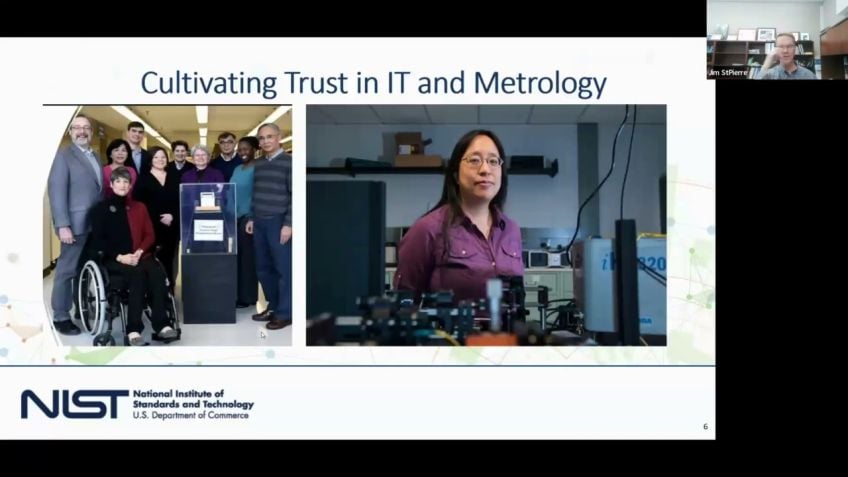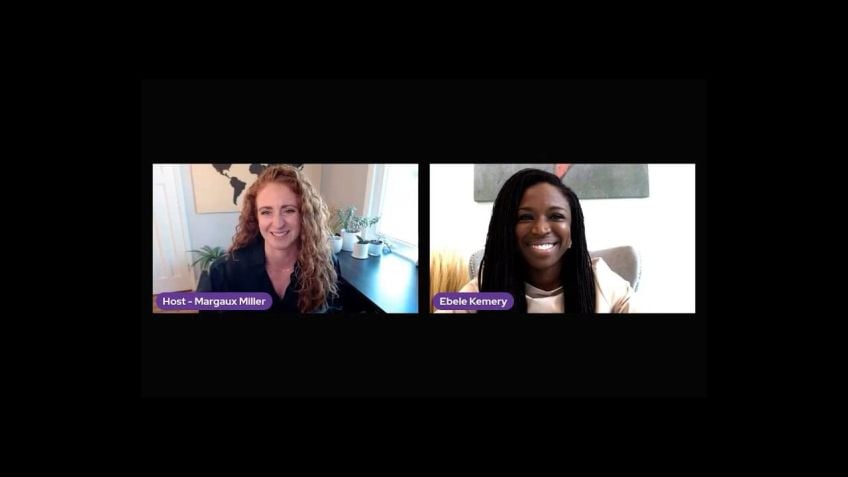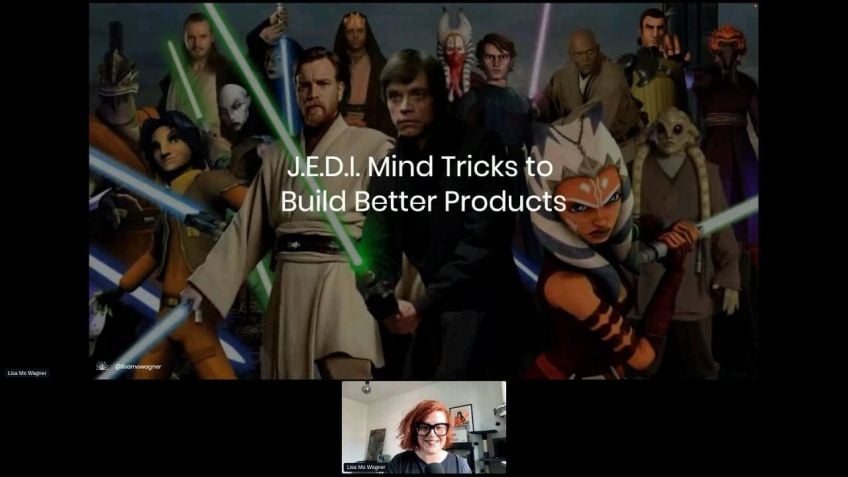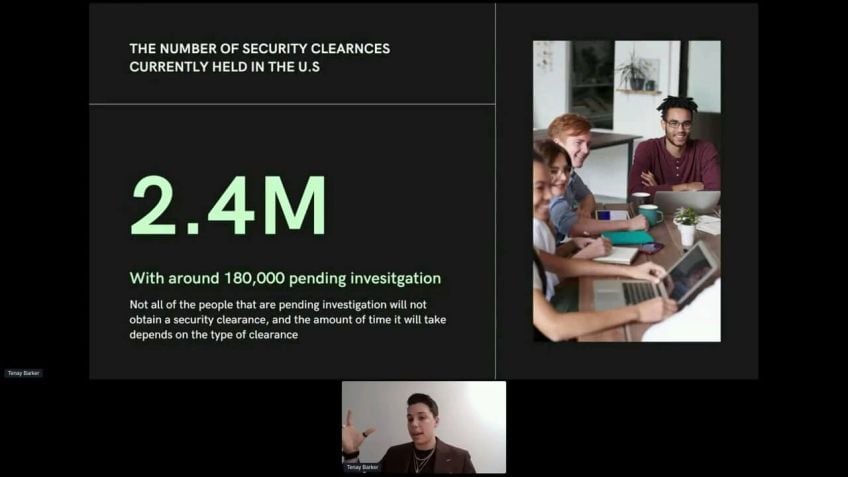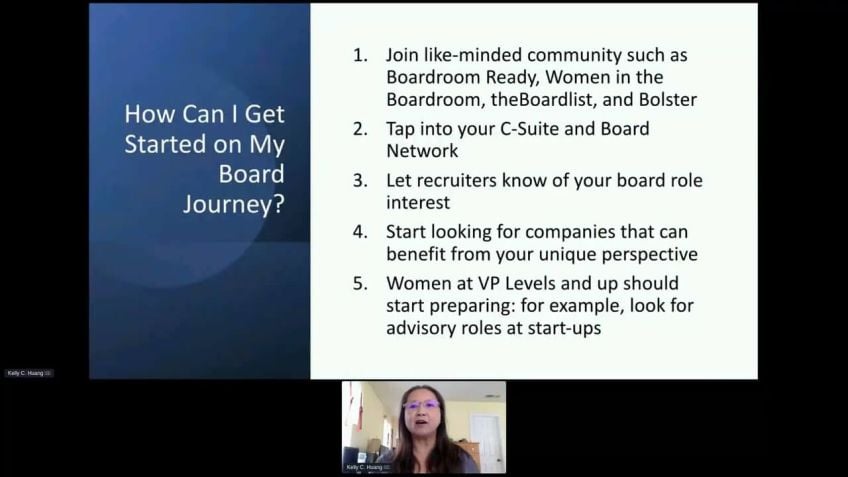Weaving DEI into the Organizational Fabric by Sharifah Amirah
Weaving D & I into Organizational DNA: An Insider’s Perspective
Today we deep-dive into weaving Diversity and Inclusion into the organizational DNA, a critical topic in today's corporate world. Whether you're joining us live or catching up via the recording, we have a lot to cover in this session featuring insights from a seasoned tech industry professional with over 20 years of experience across Asia, Europe, and the US.
Background and Context
I am currently a Chief Client Officer at an artificial intelligence start-up</bold>, Intent HQ, overseeing a $14 million revenue. With team members spread across London, Barcelona, Lisbon, and East Coast US, my insights today draw from a variety of cultural and professional landscapes.
Before we begin, I'd like to share a quote that sums up the essence of our topic today. As Werner Mayer aptly put it, "Diversity is being invited to the party, and inclusion is being asked to dance." That will be our guiding thought as we wade into the nuances of diversity beyond just race, ethnicity, and gender.
Three Key Takeaways to Understand Diversity and Inclusion
- Start Now: The key to any success is initiating the process, even the smallest steps can lead to significant wins over time.
- Data Power: Understanding the current scenario by collecting data helps track progress and identify areas of required focus.
- Story-Sharing: Share experiences and build connections as each of us holds the power to bring change.
Gender & Diversity at Intent HQ
Our journey to a more inclusive workspace began in June 2020—all it took was a dedicated group of four. We started engaging with employees, gathering feedback, attending industry events, and incrementally expanded our core team. Today Intent HQ is proud to have moved the needle from a diversity score of -4 in 2020 to a positive 26!
Moving towards Inclusivity: Initiatives and Successes
We spearheaded several measurable initiatives to promote a diverse and inclusive work culture, some of which include:
- Conducting awareness and training sessions on topics like mental health and cultural differences.
- Implementing hiring practices that eliminate bias with recruitment training, anonymous candidate data, and diverse interview panels.
- Increasing our female hires nearly threefold.
Our continuous commitment to diversity and inclusion earned us the Women in Tech Award in London last month!
Moving Forward
While we've seen great strides, the journey isn’t over. Our future plans involve publishing a manifesto, creating a knowledge hub, introducing more inclusivity initiatives, and continuing to track our progress through data.
The Role of Men in Promoting Gender Equality
Transformative change includes everyone. As such, championing diversity and equality also involves engaging men in the conversation. At Intent HQ, we are fortunate to have leaders who echo these values and have incorporated inclusive initiatives within their teams.
Wrapping Up
In conclusion, the measure of an individual is not simply what they are—it is who they are. This journey toward diversity and equality is communal, requiring an approach from a place of understanding and support. Let's continue working together to champion diversity, promote inclusion, and build success stories in tech worldwide!
Video Transcription
I will start our session today with the topic of weaving D I into the organizational DNA. Warm, welcome to those of you joining us live.Um And also for those of you who will be listening into the recording after the session, I like to take the opportunity to say thank you um to the conference organizers for inviting me to share my experience. And um I have prepared just about 10 slides to take us through this afternoon. Um And I thought I'd break it down into three distinct points. So first, just covering off why we're here a bit of context, a bit of background about myself and then moving into um the three key messages that I wanted to share with uh the community today. And then last, but not least, most importantly, is to take you through the journey um of our time and intent. Um We're back from June 2020. And so before I start, uh just a little bit background on myself, I've been in uh the tech industry for 20 over years. I've worked in um Asia and Europe and now based in the US.
Um I'm currently holding the position of chief client officer for an artificial intelligence start up called Intent HQ I lead the client team and I'm responsible for about $14 million in revenue. Um And we have team members spanning uh London Barcelona Lisbon, uh and also here on the east Coast. So it's really my pleasure to be back in this arena. I took uh a number of years of hiatus from promoting gender and diversity after my master's at the London School of Economics where I studied gender um having been burnt out. Um In the late nineties, early 2000, I decided to go back to school um to really understand sort of the psychology of bias, discrimination, inequality um As it was really, really hard for me uh growing up as a, as a tech executive in Asia. Um and I'm sure there are many of us um in the community here who have, you know, more stories to share about um sexual harassment discrimination, whether that's based on race, gender ethni ethnicity and sometimes even just the way we look. Um and the way we speak. So it was a very emotional period, having worked for a number of NGO S and really seeing the, the very strong political rhetoric that sat behind a number of gender initiatives back then.
I'm very pleased to see that, you know, years on now that uh a lot of those binary conversations, the fixation on quota systems have somewhat dissipated. And with the recent events over the years, whether that's BLM, whether it's the Me Too movement and also the pandemic, I felt that it's a great time to be back um in the scene and supporting, you know, smaller organi organizations um to be able to promote uh gender and equality across their businesses.
And so that's me in a nutshell. Um And also just to set context and I, I thought I'd share this quote which I really loved where Werner Mayer um reference is diversity is being invited to the party and inclusion um is being asked to dance. So I thought that was a great um parable. And, you know, when we talk about diversity, we often talk about gender and race and ethnicity. I like to invite us to, you know, broaden that to, as you can see on the right hand side here, a number of different facets, right? And um and also one that's not listed but tends to be implicit and strong in our, in our, in our cultural biases is also social class and that's um been very present for me personally, um less in the US, but particularly in the UK and also some parts of Asia moving on to key messages and again, um formulated uh based on years and years of, of formal education and learning about gender.
Um and also being subject to a number of what we would call um unpleasant circumstances. And then more recently, having been able to champion gender and diversity at intent. HQ. Um There's just 33 things I wanted to share. So, first of all, I think uh key takeaway is to start to start right now. Um You're never always going to get full organizational support. Um There might not be great opportunity for funding, but I I in my experience, um if you believe in it and you can get a group of like minded people together, um Any small success will eventually lead to big wins. And I'll touch upon this and share a little bit of, of data around how we had intent have been able to convert those small successes into big wins over the past couple of years. And then finally, um it may sound a bit cliche, you know, you've got the power, you've got this. Um my, my message here to everyone in the community is to share your stories and, and build those connections. And it's, you know, as, as an introvert, you know, even speaking here is not necessarily um me and my comfort zone, but I felt really important that um you know, we have within each of us, that power, that capacity to make that change.
And um no matter how hard, no matter how challenging, I, I do believe that with the right mindset with the right set of core values, um you'll be able to make that impact. So, going into our journey at intent HQ so we started in, as I mentioned in June 2020 with a very small committee. So we had four team members myself included. Um And we started to um convince management that it was a right time to start and we were able to obtain a small budget to be able to engage some experts. You know, it's, it's a, it's a very broad field as most of you would know. Um And we brought in a number of people to first talk to the organization, create more awareness, um have advocates within the business. Um train us build up awareness internally and also learn best practices from the industry and, and with intent in particular, it wasn't easy, an easy landscape to navigate given our ex distance across four different countries with very different regulatory frameworks. Um It was quite an interesting terrain to navigate throughout. So we had great help, sought legal advice. Um And, and also then started to collect the data. So we started to um engage with employees asking them for feedback on, on key areas. We attended industry events.
We also then extended the core team eventually last year to and, and now starting to create subcommittees to be able to keep the momentum up but also to have a greater um diverse representation amongst the committee. So that was our journey and like to start by sharing. Um And emphasizing actually the need um to have data to start collecting data and back in 2020. When we did our first engagement survey that focused on diversity. At the end of the year, our diversity score was actually minus four. So one would argue it's, it's easier to start when you're rock bottom. Um But so happy to see that our current engagement score is 26. And I just sharing with you some examples here of, you know, how we've been able to shift from a negative figure to, to a a very positive one. Um I'll share some of the initiatives that we had. The first one was awareness and training. We talked about bringing in experts and we chose a couple of different topics and you'll see here that um it also included things like mental health, right? I think the pandemic um has brought us some different sets of challenges that we don't have empirical frameworks to work with.
And so just being able to have that dialogue internally, create more awareness and understanding that it's OK to not be OK. And how do you seek help on that? Um We also had a presenter that came in to talk about cultural differences. And, and one thing I've always found pretty interesting um now, having been in the US for, for three years is the the differences, despite the common language, right? So very nuanced differences in culture, but very important for us to be aware that even with a common language, there are cultural differences and that speaker in particular was someone um who is actually a relation, a family, relation of a team member. And so for me, that was a very important step for us to take as a business because ultimately, we are an ecosystem of individuals and, and who live in a tribe, you know, anthropologically, we are all part of social tribes and um particularly given the challenges of remote working, I thought it was very important for us to recognize that we are extensions of our family.
We're extensions of a social network and we're out there to build connections. And in fact, um earlier this year that the I team intent decided to rebrand. So we now refer ourselves as connect with intent because truly, we feel that through building those connections, you build um strong bridges and allyship to be able to work towards a common set of values and goals that will help and support diversity inclusion on a more formal note as well.
We, we had a number of recruitment initiatives. So we posted on more inclusive job boards. Um Women in tech. Um As one of them, we had a series of management train managerial training on recruitment. How do you recognize and eliminate biases throughout the interview and recruitment processes, we spoke to the agencies that we worked with so that they would provide candidates from diverse pool. And we also have anonymized candidate data. And on our end, when we have interview panels, we make sure that there is a diverse representation amongst the interview panel. Um So really, really pleased to see that um our work on the recruitment front and you'll see the statistics where we've managed to increase our female hires.
Um almost three X over the last two years and through those ongoing initiatives that I've referenced, and that has in fact uh led us to winning the Women in Tech Awards last month in London. So, um as I mentioned in my earlier slide, small successes to translate to big wins. And what does that mean? So that means that we had greater visibility in the leadership team and also at our uh in our board level and we're getting greater support um for us moving forward. Um It is a journey I, I talked about how it was not easy. We were working with um very, very small group of resources and it wasn't without criticism. So, you know, we, we've had occasions where um you know, members of the and ask you why, why we weren't more proactive, why they weren't seeing more initiatives without really realizing that, you know, it was a very small core group of people who are um doing this because they cared about it.
It was important to them and they were doing this in their own time outside uh in addition to um what they were doing at work. So um the, the next stage is for us. So we're um publishing a manifesto. We're creating a knowledge hub. We're clearly going to be um continuing with the training and the recruitment activities. Uh There'll be a number of different inclusion initiatives across the organization, different points in the year. And we're also going to continue um the tracking. As as I mentioned, the data is, is so powerful for us to be able to understand progress but also understand areas where we were not making as much progress. Um This slide talks about some of the really admirable men that I've had the opportunity of working with and in 10 HQ and even through my academic training on gender and, and the work I've done with the UN. Um It's, it's been very clear that we do need to engage with men, we do need to have participation um as we promote gender equality, it's, it's, you know, men form a very critical part of that. So really pleased to just share um very quickly here, some, some, some really amazing stories for individuals here. Um Albert and Javier in our, in our Barcelona office. Um Kip in the middle, who's based here in Philly and also Lawrence, who's based in our Lisbon office.
He's actually a co-founder of intent and the commonality across these four great managers, leaders is, is a strong set of core values and their operating model within their teams have truly led them to be able to empower their team members. And um a quick example of that is um rotational chairing of meetings, but also truly making sure that the voices of each and every individual um within their team is heard. Um Kip, um for example, here too has personally championed buddy and informal entering programs um which has been amazing again, I come back to that importance of building connections and, and he's been a great champion for us internally. And the, and the last example of reference is, is an initiative that Lawrence has set up for his team, which is 17 minutes. And the purpose of this is, is to, is multiple fold. One is to enable each team member to come in and have that space regardless of where you are in the organization, the same 17 minutes according to you, for you to talk about yourself, for you to um bring awareness to your background to the context in which you're operating and then share any um success stories, challenges that you have.
So it's been a, it's been a very inclusive initiative and um the team have really, really benefited from that and it's an ongoing practice for Lawrence's team. So I'm really happy to be able to have other team members who've shared strong set of values and operated from those principles and really support that um inclusion within the organization. Um That was my final slide, I think um just to wrap up, I, I want to, to reiterate that you truly believe that, you know, regardless of background. Um It's never what you are. It really is who you are. And um yeah, I have many, many individuals to thank for, for the successes I've had and where I am today and I really hope that us as a community here and women in tech are able to share those stories. Thank those who have supported us and, and in turn support others to be as successful if not more. And that's all for me with two minutes to spare. Very happy to take questions. Ok? If there are no questions for me today, I'll be happy to give everyone a minute back to be able to get a refreshment and hop into the next session. Um Thank you again for your time. I look forward to being able to connect with you.

